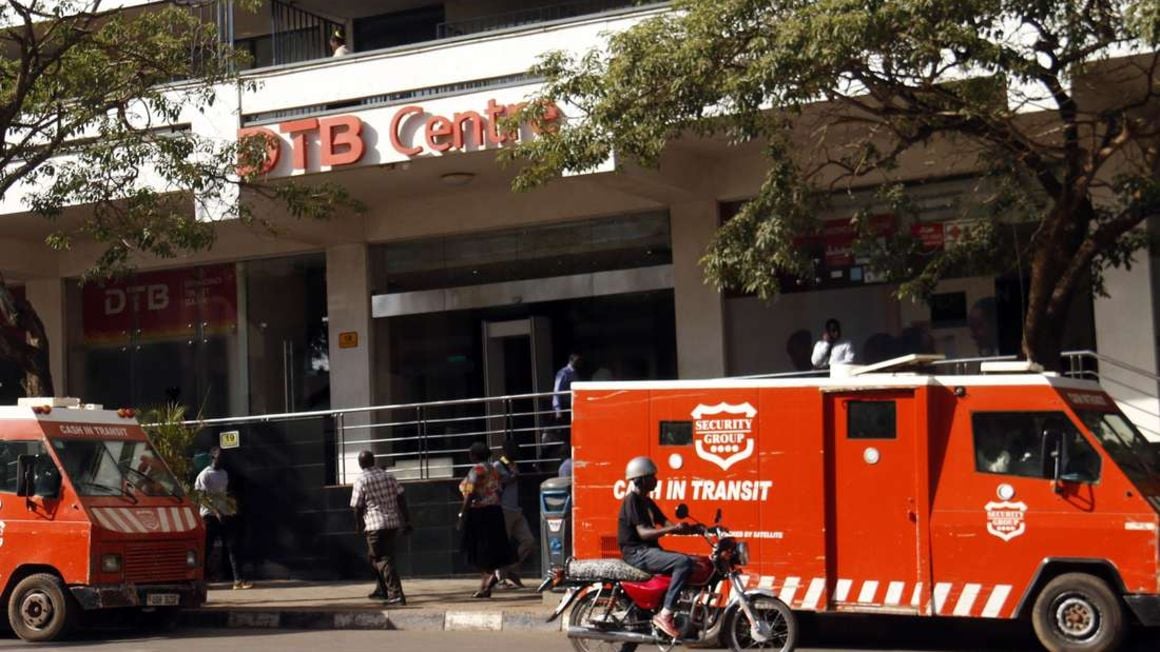
DTB Centre in Uganda. FILE PHOTO | NMG
Summary
- It is fairly common throughout the world for local subsidiaries of banks to draw on the strength of the parent bank’s balance sheet simply because of lending limitations of the subsidiary in its jurisdiction.
- A bank has legal lending limits that are linked to its capital base therefore it may ask the parent to take on a loan that would breach the subsidiary’s statutory lending limits.
Our neighbours in Uganda have recently provided some very interesting judicial pronouncements that have created clammy hands of fear in the Kenyan banking industry that lies eastward across the Victorian pond.
In the most recent case, a Ugandan businessman borrowed a series of loans running in the tens of millions of US dollars from a Ugandan subsidiary of a Kenyan bank, part of the borrowing of which was lent by the Kenyan parent bank.
It is fairly common throughout the world for local subsidiaries of banks to draw on the strength of the parent bank’s balance sheet simply because of lending limitations of the subsidiary in its jurisdiction. A bank has legal lending limits that are linked to its capital base therefore it may ask the parent to take on a loan that would breach the subsidiary’s statutory lending limits.
Typically, these loans would be in foreign currency and would be assessed at the parent bank’s credit committee level. The local subsidiary bank then becomes a collection agent for the principal and interest payments and remits the same to the parent bank.
This kind of lending is not limited to the private sector. Governments also take on commercial loans from foreign banks in what are known as syndicated loans where a group of banks, some of which may have local presence, provide a loan to the government and appoint one bank as the collection bank.
The collecting bank, acting as a collection agent, will receive the loan repayment from the government and then remit the same to the various lenders in the syndicate.
Due to the significant size of the loans, more often than not the loans will be placed on the parent bank’s balance sheet as they have the financial liquidity to provide the funds as well as the capital strength to support loans of that size from a single borrower lending limit perspective.
Back in the Ugandan case, the Ugandan businessman fell into deep trouble and couldn’t service his loans. After scrambling about unsuccessfully trying to find another lender who could take over the loans from the Kenyan subsidiary and the Kenyan parent bank, he and his lawyers came up with a brainwave of Donald Trump proportions: Sue the banks, claiming that attempts at collecting the loan repayments were tainted with fraud and, wait for it, that the Kenyan parent of the bank was not licensed to conduct the business of a financial institution in Uganda by the regulator Bank of Uganda, and therefore the loan from the Kenyan parent was illegal from the onset.
Moreover, the lawsuit also claimed that the Kenyan parent bank required explicit authority from the regulator to appoint its Ugandan subsidiary as an agent to collect the loan repayments.
A pretty bizarre argument given the fact that at the point where the loan was approved and disbursed, the Ugandan businessman quite likely smacked his lips in pure glee, popped a bottle of champagne and proceeded to withdraw the money with no qualms about the licensing capacity of the source of funds.
The judge presiding over the case took no prisoners in his October 7, 2020 judgment and issued a stupefying ruling that beggars belief. He ruled that indeed the Kenyan parent bank did not have the legal licence to conduct business in Uganda and therefore the loan was invalidly issued. Secondly he ruled that the Kenyan bank did not have authority from the regulator to appoint its Ugandan subsidiary as a collecting agent and then he ordered that all the properties that had been mortgaged as securities by the businessman be released back to him forthwith. Further, the judge ordered that all the monies that the bank had recovered from the borrower in the course of trying to enforce payment be reimbursed.
The judgment sent the Ugandan banking association into a tearful tizzy, with its Kenyan counterpart holding up tissues in support. It put into grave danger a whole series of loans that Kenyan and South African banks with Ugandan subsidiaries had provided, but also inadvertently called into question syndicated commercial loans that had been given to the Government of Uganda by local and foreign institutions.
The Bank of Uganda (BoU) governor issued a statement a week later on October 14, essentially taking the High Court judge to school on what the definition of a foreign bank conducting business in the Ugandan jurisdiction was as per the relevant law, as well as what that same law defined as an agent bank, both of which the judge had misinterpreted.
The governor also explained what the BoU’s regulatory reach was as far as foreign banks that were undertaking lending or non-deposit taking activity in Uganda. In simple words: Judge, get a life! Anyway, the Ugandan subsidiary and the Kenyan parent bank rushed to court to get a stay of execution on the High Court judge’s order pending appeal, which was mercifully given.
In the stay of execution judgment dated November 2, the judge gave a zinger of a parting shot: “Before I take leave of this matter, I was flabbergasted by one of the parties sending emissaries to me with financial proposals in order to influence my decision. This is disgusting to say the least.” Well, I leave it to you to guess who might be the party so unnamed.
Carol.musyoka@gmail.com. @carolmusyoka





No comments :
Post a Comment